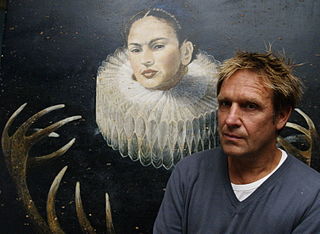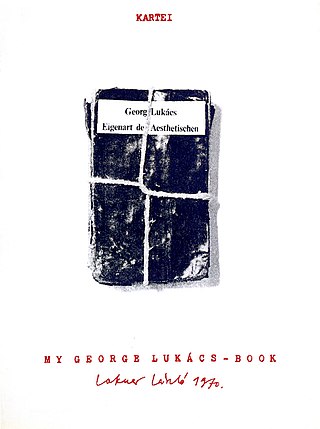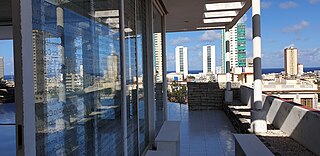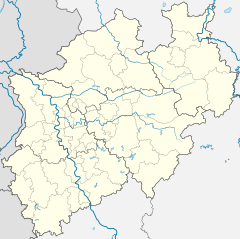
Peter Weibel was an Austrian post-conceptual artist, curator, and new media theoretician. He started out in 1964 as a visual poet, then later moved from the page to the screen within the sense of post-structuralist methodology. His work includes virtual reality and other digital art forms. From 1999 he was the director of the ZKM Center for Art and Media Karlsruhe.

Jonathan Borofsky is an American sculptor and printmaker who lives and works in Ogunquit, Maine.

Uwe Wittwer is a Swiss artist. He lives and works in Zürich, Switzerland. The media he uses include watercolor, oil painting, inkjet prints and video.

Nancy Graves was an American sculptor, painter, printmaker, and sometime-filmmaker known for her focus on natural phenomena like camels or maps of the Moon. Her works are included in many public collections, including those of the National Gallery of Art, the Brooklyn Museum of Art, the Smithsonian American Art Museum, the National Gallery of Australia (Canberra), the Des Moines Art Center, Walker Art Center (Minneapolis), and the Museum of Fine Arts. When Graves was just 29, she was given a solo exhibition at the Whitney Museum of American Art. At the time she was the youngest artist, and fifth woman to achieve this honor.

Markus Vater is a German artist. He studied at the Kunstakademie Düsseldorf and the Royal College of Art, London. From 2012 to 2016 he had been teaching at the Royal College of Art in London. In 2014 he had a guestprofessorship at the Hochschule für bildende Künste Hamburg and from 2016 to 2019 at the Staatliche Akademie der Bildenden Künste Karlsruhe. Currently he is teaching at the Hochschule der bildende Künste Essen. His studio is at Studio Voltaire. Vater lives in London and works in London and Essen.

Mumok is a museum in the Museumsquartier in Vienna, Austria.
John De Andrea is an American sculptor known for his realistic sculptures of human figures, dressed or nude and in true-to-life postures.
Ana Albertina Delgado Álvarez is a Cuban artist. Her main disciplines are painting, installations and photography. She studied at the Academia Nacional de Bellas Artes San Alejandro in Havana, Cuba. In 1988 she graduated from the Instituto Superior de Arte (ISA), Havana, Cuba. During the 1980s she was member of the group Vinculación and also of the Group Puré in Havana, Cuba.
Esterio Segura Mora is a Cuban artist.
José Toirac is a Cuban artist specializing in painting, drawing, and installation.
Ludwig Merwart was an influential Austrian painter and graphic artist. He is an important representative of Tachism and was a major force in graphic arts and prints, especially after World War II. His work belongs to the most significant and interesting contributions to graphic arts in Austria to this day.

Francis Acea is an artist known for his inspiration by what The Language of Objects in the Art of the Americas describes as "the often anonymous creations of provisional art." Along with artist Diango Hernández, also inspired by the provisional art movement in Cuba, he formed the Ordo Amoris Cabinet. Acea is a graduate of the Havana Superior Institute of Design. As of 2023, Acea lives between New York, NY and Florida, FL. Acea has exhibited internationally, solo and group.
The Marinko Sudac Collection, based in Zagreb, Croatia, has been created with a clear collecting strategy based on the region of Central and Eastern Europe, additionally spanning from the Baltic area to the Black Sea. The guiding principle of the Collection is systematic exploration, researching, and promotion of the avant-garde practices which have been marginalized, forbidden, and at times completely negated due to the historical, social and political circumstances. In this context, the Marinko Sudac Collection gives the most complete and comprehensive overview on the art of this region. The Collection starts at 1909, and it show the continuity from the first Avant-Gardes, through neo-avant-garde and New Artistic Practices, ending with the fall of the Berlin Wall. The global uniqueness of the Marinko Sudac Collection is also seen in the kind of media it contains. It contains not only traditional artworks, such as paintings, sculptures, and photographs, but it gives equal importance to documentary and archival material. Great importance is put on these almost forgotten media, which enable research of specific phenomena, artists and the socio-political situation which affected this type of art. The Collection contains a great number of museological units, and it treats the documentary and archival material on the same level as traditional artworks. By examining the units contained in the Marinko Sudac Collection, one can read not only the art scene or the art production of a certain artist, but the full status of the society, the socio-political atmosphere of the region in which this art was created in.

Eric Peters is a German painter, who now lives and works in Aachen.

Zero was an artist group founded in the late 1950s in Düsseldorf by Heinz Mack and Otto Piene. Piene described it as "a zone of silence and of pure possibilities for a new beginning". In 1961 Günther Uecker joined the initial founders. ZERO became an international movement, with artists from Germany, the Netherlands, Belgium, France, Switzerland, and Italy.
Haus Ludwig, formerly Galerie Ludwig, is an art museum in Saarland, Germany.
Yuk King Tan is an Australian-born Chinese-New Zealand artist. Her work is held in the permanent collections of Auckland Art Gallery Toi o Tāmaki and the Museum of New Zealand Te Papa Tongarewa.

László Lakner is a Hungarian-German painter, sculptor and conceptual artist. He lives and works in Berlin. László Lakner was born in Budapest in 1936 to an architect of the same name and his wife Sara, born a Sárközy. Lakner is the father of the Hungarian artist Antal Lakner, who was born in 1966. After a long period in the cities Essen and Berlin, László Lakner now lives and works exclusively in Berlin, in the Charlottenburg district. Among other art shows, he was invited three times to participate in the Venice Biennale and once to documenta in Kassel (1977).
Péter Türk Hungarian visual artist. In 1969, he became a member of the Szürenon group, then an important participant in the Hungarian neo-avantgarde scene. In 1970, he took part in the R-Exhibition, held at the University of Technology (Budapest), and was an exhibitor at György Galántai's Balatonboglár Chapel between 1970 and 1972. In 1976, he participated in the exhibition titled Exposition. Photo/Art. His first significant solo show was held at Budapest Galéria Józsefvárosi Kiállítóterme in 1987, under the title Psychograms, Phenomena. He participated in many international group shows. His works can be found in the collections of Kunsthalle Praha (Praha), the Ludwig Museum - Museum of Contemporary Art (Budapest), and the Hungarian National Gallery (Budapest), among others.

The Ludwig Foundation of Cuba (LFC) is a non-governmental, non-profit institution located in Havana, Cuba, created with the mission of protecting and promoting Cuban artists in Cuba and internationally.













